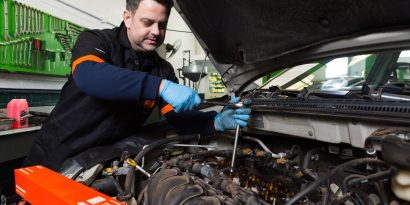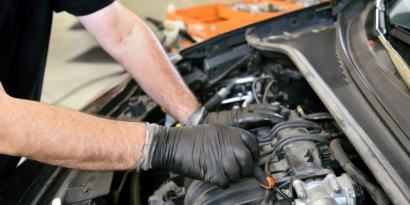Responsible for controlling the proper opening and closing of the engine valves, the valve lifter is one of those components whose proper operation and maintenance are essential to ensure efficient and reliable performance for the vehicle.
After all, as the expert already knows, the lifter works in conjunction with the camshaft and valves to optimize engine performance, power, and durability. The issue is that, like any other part subject to friction and continuous movement, the valve lifter wears out over time.
If this wear is not identified and addressed quickly, there is a high chance that the car will develop more severe problems, such as abnormal noises, power loss, and even severe combustion system failures. That’s why, in today’s article, we’ll explore the main signs of wear on valve lifters and share valuable tips to ensure an efficient and safe installation. Shall we?
Understanding the different types of valve lifters
Before anything else, it’s worth remembering that valve lifters can be divided into two main types: mechanical lifters and hydraulic lifters. Each, of course, has its specific characteristics and distinct applications. Take a look:
Mechanical lifters
Mechanical lifters, also known as solid lifters, require periodic adjustments to maintain the correct clearance between the valves and the camshaft. They are widely used in high-performance engines because they offer greater control and precision in valve operation. However, because they do not have an automatic compensation system, they can generate noise if not properly adjusted.
Hydraulic lifters
Hydraulic lifters have an internal system that automatically adjusts, reducing the need for frequent adjustments. They work by using the pressure of the lubricating oil to maintain the valve clearance at the ideal point, contributing to quieter and more efficient operation. This type of lifter is quite common in modern passenger vehicles because it improves acoustic comfort and reduces premature valve wear.
But remember that regardless of the type of valve lifter you will work with, it is essential to regularly monitor its condition to avoid failures that compromise the engine. This way, you can identify potential signs of premature wear in advance and avoid headaches, as we will see in the next section of this article.
5 signs of valve lifter wear
In practice, the valve lifter is designed to withstand long periods of use. But time, friction, and lack of lubrication can cause wear — that’s when the expert needs to step in! Here, we list 5 clear signs that it’s time to inspect and possibly replace the lifters. Check it out:
Strong metallic noises in the engine
One of the first signs that the lifters may be worn is an abnormal noise in the engine. If you hear a constant metallic sound, similar to a “ticking,” especially at idle or during the engine’s first starts, it indicates excessive clearance in the lifters — the famous “lifter knocking.” This noise occurs because the lifter is not correctly filling the gap between the camshaft and the valves.
Power loss and acceleration failures
When the lifters do not operate correctly, the opening and closing of the valves may be compromised, directly affecting the combustion of the air/fuel mixture. This can lead to power loss, uneven acceleration, and engine malfunctions. If the vehicle begins to show these issues without an obvious explanation, an inspection of the valve system may reveal worn lifters as the cause of the problem.
Oil leak in the lifter area
Hydraulic lifters rely on lubricating oil to operate correctly. If there are oil leaks in the lifter area or the engine head, this may indicate internal sealing failures in the lifters, causing them to lose pressure and not perform their function properly.
Irregular wear on lifters and camshaft
When performing a visual inspection during engine disassembly, observe if the lifters show scratches, cracks, or irregular wear. If these marks are present, it is essential to replace them immediately to prevent the camshaft from also being damaged.
Idle fluctuation and excessive fuel consumption
Finally, if the lifters are misaligned or worn, the engine may show irregular idle and increased fuel consumption. This happens because the valve opening timing may be compromised, affecting combustion efficiency and forcing the engine to work harder to compensate for the failure.
Tips for an efficient and safe valve lifter installation
It’s already clear that despite their small size, valve lifters play a huge role in the proper functioning of the engine. Precisely for this reason, replacing and maintaining these components requires extra attention and a lot of technique from the installer.
In this context, a good tip is to always choose quality parts with a proven origin when making the replacement. After all, using reliable replacement components makes a big difference in the durability and performance of the engine. This is the case with RIO valve lifters, for example, which are manufactured with high-strength and precision materials, ensuring maximum efficiency in the valve system operation!
Another useful tip is that when replacing the lifters, a careful inspection of the camshaft, rocker arms, and valves can help avoid complications. If these parts are worn, they may compromise the operation of the new lifters. Also, remember that the lifters need to be correctly lubricated to operate without failure.
Therefore, the best approach is to use the oil recommended by the manufacturer and follow the torque instructions when installing the new components. And finally, after replacement, don’t forget to start the engine and monitor the operation of the assemblies for a while. Pay attention to possible noises and check for oil leaks. If necessary, make new adjustments before releasing the vehicle!
Frequently asked questions
How often should valve lifters be replaced?
Valve lifters can last between 100,000 km and 150,000 km, but their lifespan depends on the engine type and lubrication quality.
How do I know if the lifters are faulty without disassembling the engine?
Metallic noises, acceleration failures, and excessive oil consumption can indicate problems with the lifters, requiring a detailed inspection.
Can I replace only one lifter, or do I need to replace the entire set?
The ideal is to replace all the engenhes lifters, ensuring uniform operation and avoiding irregular wear.
When it’s time to replace the valve lifter, count on RIO!
As we have seen, valve lifters are essential parts for the correct functioning of the engine, and their wear can compromise the vehicle’s performance and efficiency. In other words: identifying early signs of failure and performing replacements at the right time can avoid more severe problems and ensure greater engine durability.
And to ensure a quality service, always choose high-performance lifters with a proven origin, such as those offered by RIO. Manufactured with advanced technology and maximum precision, RIO valve lifters are the ideal choice for mechanics and installers who prioritize excellence in every repair.





